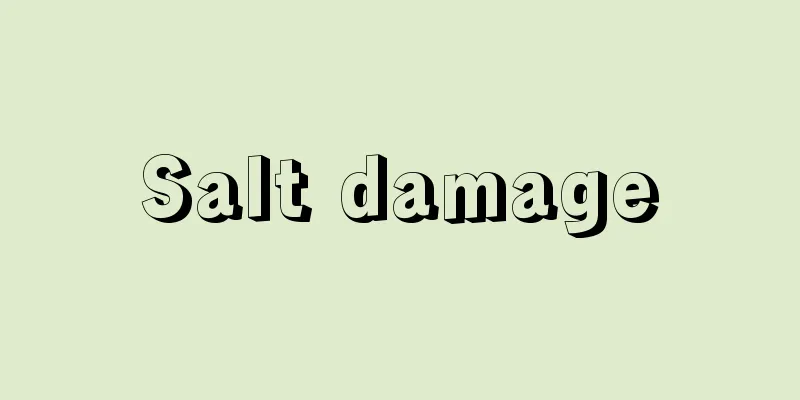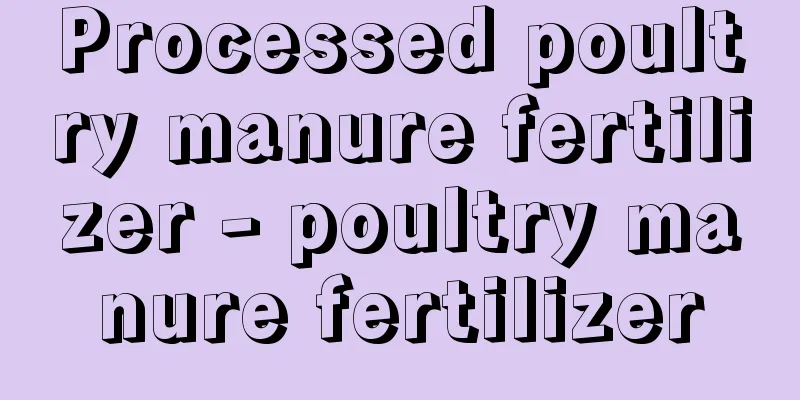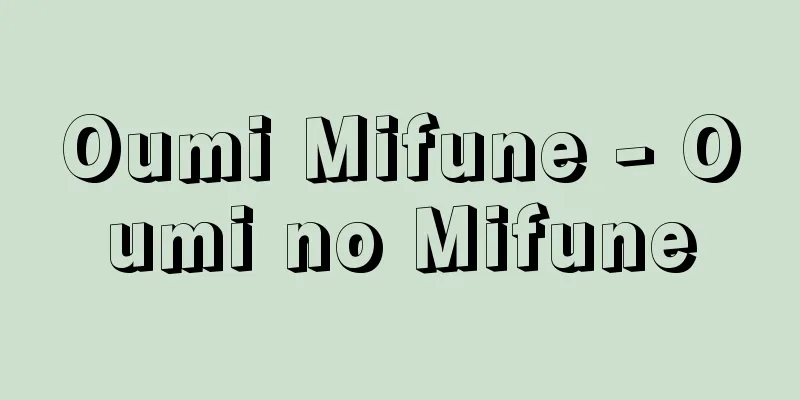Salt damage

|
Damage to crops, buildings, and facilities caused by salt in the soil or air. Salt soil damage is caused by high salt concentrations in the soil, and salt wind damage or sea breeze damage is caused by seawater spray blown up and carried inland by strong winds. Salt soil damage occurs when salt in the ground precipitates on the ground's surface during a drought, causing damage to cultivated crops. Salt water damage occurs when crops in cultivated land are directly soaked in seawater or covered with seawater. Salt wind damage occurs when large amounts of sea salt particles are carried by strong winds, causing plants and crops to wither. In the case of transmission and distribution lines, calcium salts precipitated from sea salt particles combine with sulfuric acid mist to form gypsum, which reduces the insulating function of insulators and causes damage such as power outages. Damage is reduced if heavy rain falls immediately after salt adheres to plants or power lines. Damage to aluminum building materials and television antennas began to appear in coastal regions. Also, from around 1983, damage to concrete bridge piers along the coast became noticeable, a new type of salt damage, mainly in areas along the Sea of Japan, such as Hokkaido and the Tohoku region. River sand had been the main source of sand for reinforced concrete aggregate, but as this supply ran low, washed sea sand began to be used more frequently, which led to deterioration in the strength of concrete. In snowy areas along the Sea of Japan coast, northwesterly winter winds carry snow containing large amounts of sea salt particles inland, where they adhere to power lines and insulators, causing power outages and flashovers due to a decrease in insulation. This phenomenon is called salt-snow damage (salt damage in low temperatures) and is an obstacle to power transmission and distribution in winter. Measures to prevent salt damage include the development of salt-resistant electrical equipment, the establishment of effective measures using weather forecasts, and the creation of windbreaks and tidebreak forests. [Takao Ando and Masao Hanzawa] Source: Shogakukan Encyclopedia Nipponica About Encyclopedia Nipponica Information | Legend |
|
土壌中や空中の塩分によって、農作物や建造物、施設などが被害を受けること。土壌中の塩分の濃度が高くなるために生ずる塩土害と、強い風によって海水の飛沫(ひまつ)が吹き上げられて内陸に運ばれることによる塩風害または潮風害に大別される。塩土害のうち干魃(かんばつ)のときに地中の塩が地表に析出して栽培されている農作物に被害を与えることを旱塩害(かんえんがい)といい、耕地の農作物が直接海水に浸されたり、海水をかぶる場合を塩水害という。塩風害は強風にのって多量の海塩粒子が運ばれ、植物、農作物を枯らしてしまう。送・配電線の場合は、海塩粒子から析出したカルシウム塩が硫酸ミストと化合して石膏(せっこう)となり、碍子(がいし)の絶縁機能を低下させることによって停電などの被害を起こす。塩分が植物や送電線に付着した直後に強い雨が降ると被害は減少する。海岸地方ではアルミニウム建材やテレビアンテナの被害などがみられるようになった。また1983年(昭和58)ごろから、北海道、東北地方などの日本海側を中心に、塩害の新しい形として海岸沿いのコンクリート製橋脚に傷みが目だち始めた。鉄筋コンクリート骨材用の砂は、川砂がおもに使用されていたが、その払底に伴い海砂を洗浄して使うことが多くなり、コンクリート強度劣化等がおこる例が発生している。 また、日本海沿岸の降雪地帯では、冬季北西の季節風によって多量の海塩粒子を含んだ雪が内陸部にまで運ばれ、送電線や碍子に付着して絶縁機能の低下による停電やフラッシュオーバーを起こすことがある。この現象は塩雪害(低温季塩害)といわれ、冬季の電力送配電の障害となっている。塩害を防ぐ対策としては、耐塩害電気設備の開発、天気予報の活用による有効な対策の樹立、防風林・防潮林の設定などがある。 [安藤隆夫・半澤正男] 出典 小学館 日本大百科全書(ニッポニカ)日本大百科全書(ニッポニカ)について 情報 | 凡例 |
Recommend
Slime bacteria - myxobacteria
A bacterium belonging to the Myxobacteriomycetes f...
Ako Wholesaler - Ako Wholesaler
...In Osaka, there were 14 salt wholesaler associ...
Ethylenediaminetetraacetic acid (English spelling)
Also known as ethylenediaminetetraacetic acid, ab...
Emperor Sushun
According to the genealogy of the imperial family...
Charles Messier
French astronomer. The first author of the Messie...
Volga-Don Canal - Volga-Don Canal
This canal, which connects the Volga and Don river...
Steel - Kozai
Steel is widely used as an industrial material in...
FA (Factory Automation)
…The term office automation itself was first used...
Contact
…During the Christian era, it was also called “ko...
fixed bed
...When solid particles are stationary and a flui...
April Uprising (English spelling)
An 1876 Bulgarian national uprising against Ottoma...
Henri (English spelling) Robert Henri
1865‐1929 A realist painter who played a leading r...
Stirling engine
An external combustion engine in which gas in a cy...
Tran Van Giau (English spelling)
1910-69? Leader of the Indochinese Communist Party...
Sigurd
…A character who appears in Old Norse legends suc...









